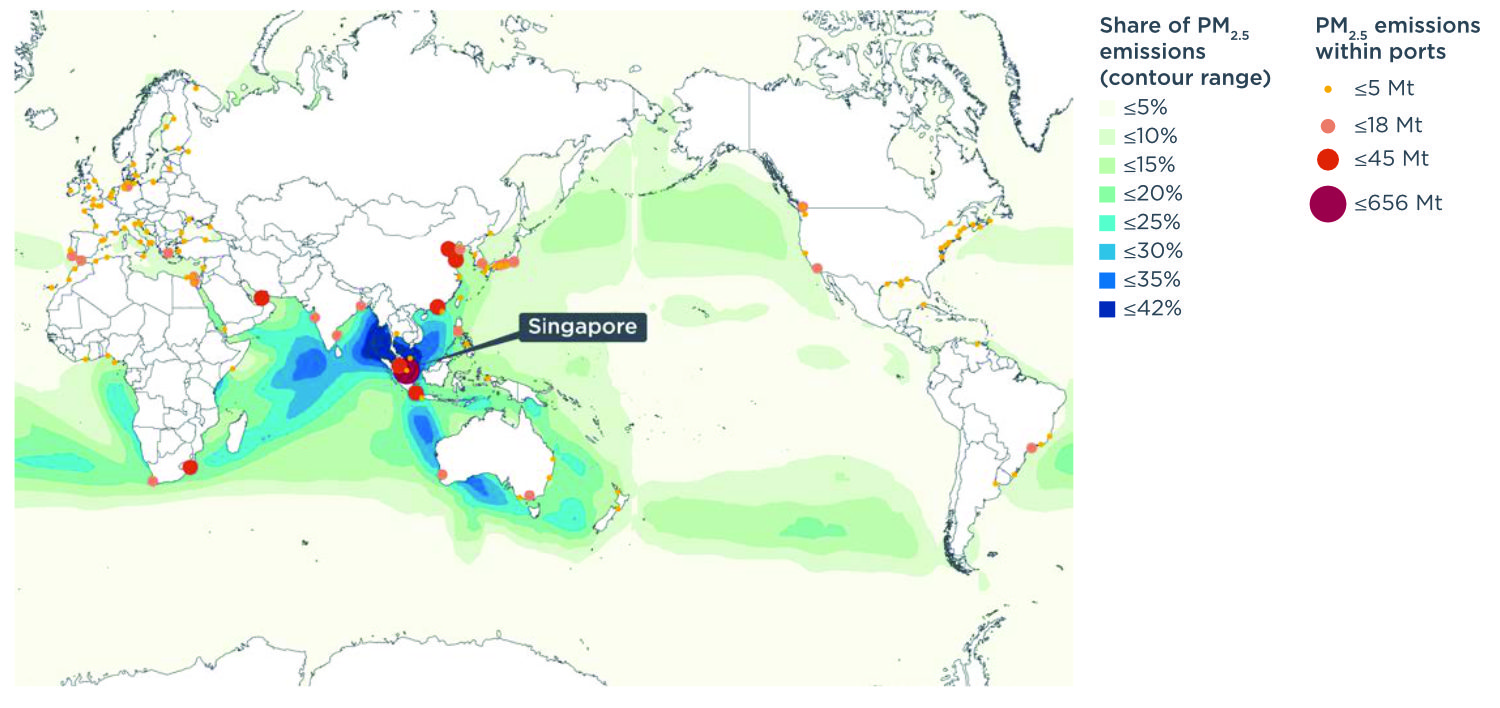Global scrubber washwater discharges under IMO’s 2020 fuel sulfur limit
White paper
Exporting emissions: Marine fuel sales at the Port of Singapore
This paper develops a new method to identify how and where ships bunker (i.e., purchase and load) fuel and then uses data from 2019 to track the resulting air and water pollution worldwide. The improved understanding of the current bunkering practices of international shipping that results can help guide decisions about how to transition to alternative marine fuels in the future. Singapore, which sells about one-fifth of the world’s marine fuel and suffers from premature mortality due to shipping air pollution that is 10 times the global average on a per capita basis, serves as a case study for this work.
Results show that the 35 million tonnes of marine residual fuels sold to large cargo ships in Singapore in 2019 generated a significant amount of fine particulate matter (PM2.5) that was primarily emitted on key shipping lanes. As shown in the figure below, the relative contribution of these PM2.5 emissions to overall shipping air pollution was above 42% in shipping lanes near Singapore (darkest blue color); particularly intense hot spots are seen in the South China Sea, the Indian Ocean, and throughout Oceania, including along the western and southern coasts of Australia.

Figure. Share and mass of shipping PM2.5 emitted by ships burning residual fuel sold in Singapore.
Additionally, scrubber washwater discharges linked to residual fuel sold in Singapore polluted Singapore’s own Exclusive Economic Zone and waters in neighboring countries and even ports in Europe. Accounting for greenhouse gas (GHG) emissions from marine fuel sales would quadruple Singapore’s domestic inventory if they were attributed to the country.
The authors draw a few main conclusions from this work. First, countries like China, Malaysia, Indonesia, and Australia could win twice by producing and selling renewable marine fuels at their ports, as this would reduce local air and water pollution and allow them to capture the economic benefits of new renewable marine fuel markets. Second, Singapore will need to transition to low-carbon bunkering if it wants to remain an important bunkering port. The country could halt further investment in fossil fuel bunkering infrastructure and expand investments into “green” marine fuel development. Finally, Singapore could lead regional and international efforts to advance green shipping corridors.
